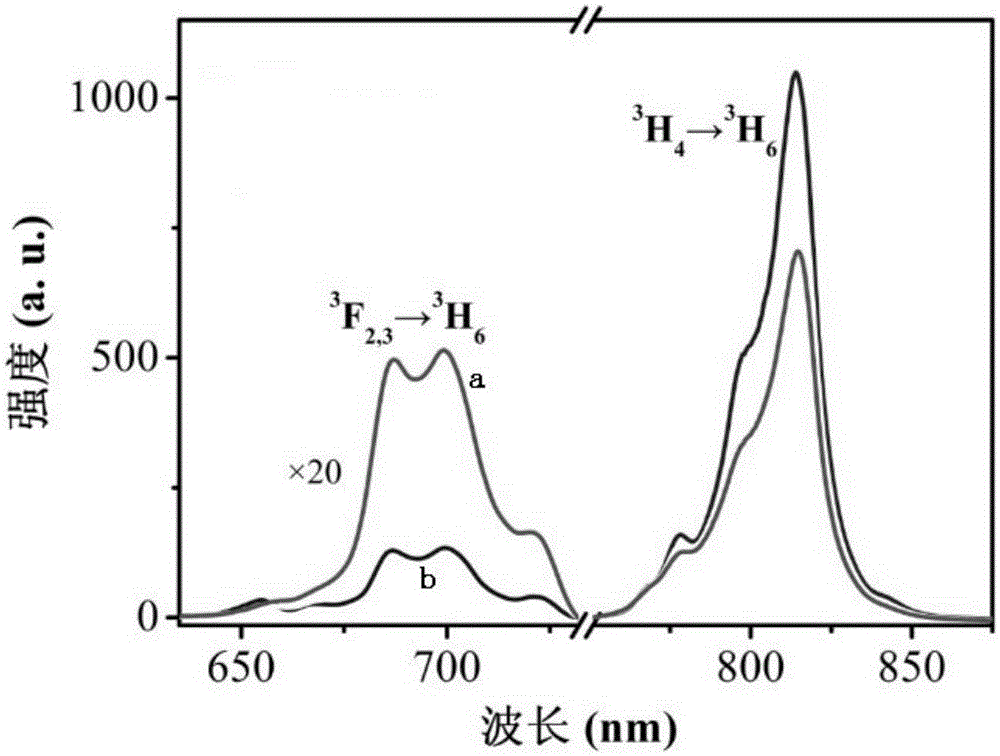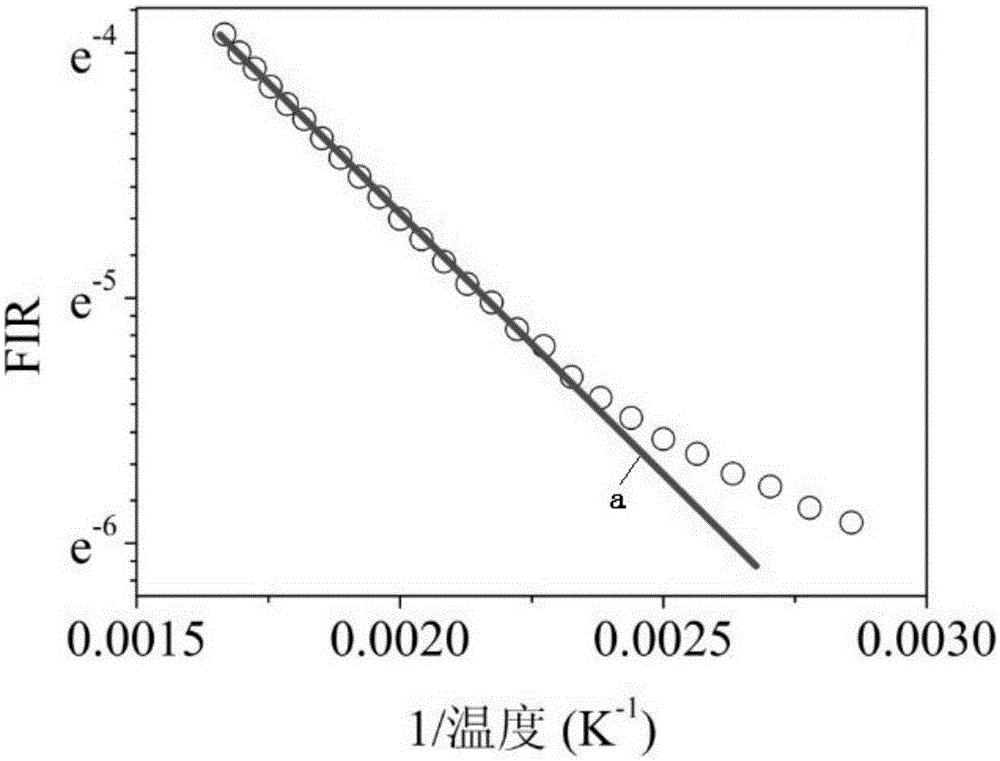Correction method of up-conversion fluorescence strength ratio temperature measurement technology
A technology of fluorescence intensity ratio and technology, applied in thermometer testing/calibration, thermometers, measuring devices, etc., can solve the problems of inaccurate temperature measurement results of temperature measurement technology, achieve strong anti-interference ability, improve accuracy, and good stability Effect
- Summary
- Abstract
- Description
- Claims
- Application Information
AI Technical Summary
Problems solved by technology
Method used
Image
Examples
specific Embodiment approach 1
[0014] Specific Embodiment 1: In this embodiment, a correction method of up-conversion fluorescence intensity ratio temperature measurement technology is carried out according to the following steps: 1. The pulsed excitation light emitted by the 980nm diode laser is converged by a convex lens and irradiated to the sensor doped with rare earth ions. On the temperature-sensitive material, the up-converted fluorescence emitted by the temperature-sensing material doped with rare earth ions is converged and incident into the computer-controlled grating spectrometer through another convex lens, and the fluorescence spectrum collected by the computer-controlled grating spectrometer has two fluorescence emission peaks, respectively It is the fluorescence emission peak generated by the radiative transition from two adjacent and thermally coupled energy levels of rare earth ions to the lower energy level. The fluorescence wavelength emitted by the upper energy level A is shorter than the ...
specific Embodiment approach 2
[0017]Embodiment 2: This embodiment differs from Embodiment 1 in that the temperature-sensing material doped with rare earth ions is a temperature-sensing material co-doped with ytterbium ions and other rare earth ions. Others are the same as in the first embodiment.
specific Embodiment approach 3
[0018] Specific embodiment three: the difference between this embodiment and specific embodiment one or two is: the lower energy level B radiation intensity I 1 Attenuation with double e exponential law: I 1 =C 01 exp(-t / τ 1 )+C 02 exp(-t / τ 2 ), τ 1 and τ 2 is the fitted lifetime, C 01 、C 02 To fit the weight coefficient, the fitted lifetime τ at different temperatures is obtained by double-e exponential fitting of the lower-level B fluorescence decay curves at different temperatures 1 and τ 2 ; Upper level radiation intensity I 2 The decay law with time t is three-e exponential decay: I 2 (t)=C 0 exp(-t / τ 0 )+C 1 [C 01 exp(-t / τ 3 )+C 02 exp(-t / τ 4 )], short-lived τ 0 is the energy level intrinsic lifetime, fixed τ 3 =τ 1 , τ 4 =τ 2 , C 0 、C 1 is the fitting weight coefficient; using C 01 、C 02 , τ 3 , τ 4 The three-e exponential fitting is carried out on the decay curve of the upper energy level upconversion fluorescence at different temperatures, ...
PUM
 Login to View More
Login to View More Abstract
Description
Claims
Application Information
 Login to View More
Login to View More - R&D
- Intellectual Property
- Life Sciences
- Materials
- Tech Scout
- Unparalleled Data Quality
- Higher Quality Content
- 60% Fewer Hallucinations
Browse by: Latest US Patents, China's latest patents, Technical Efficacy Thesaurus, Application Domain, Technology Topic, Popular Technical Reports.
© 2025 PatSnap. All rights reserved.Legal|Privacy policy|Modern Slavery Act Transparency Statement|Sitemap|About US| Contact US: help@patsnap.com



